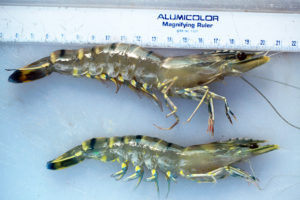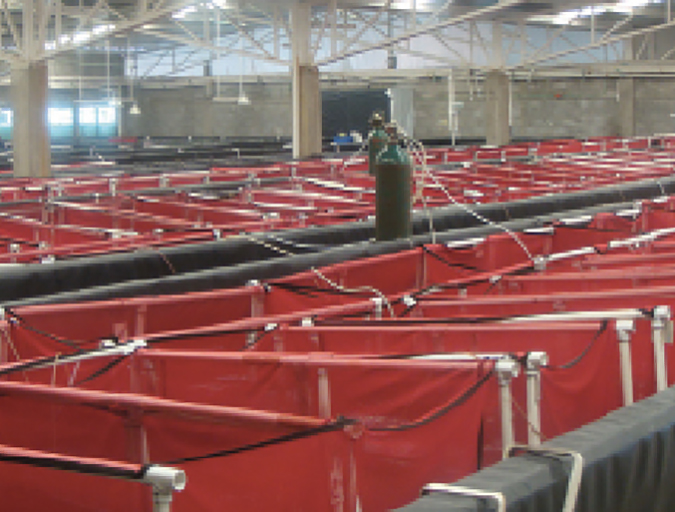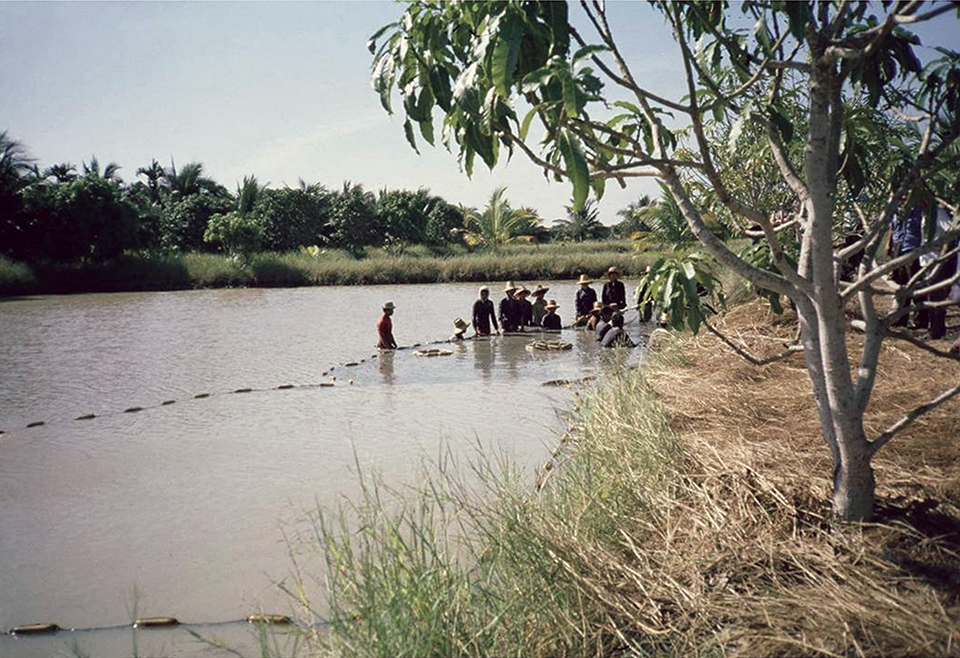Poor reproduction should discourage ‘copiers’

Due to the limited stock protection methods that can be scaled up to a commercial level, shrimp-breeding programs often use inbreeding to help protect their investment in producing specific pathogen-free, domesticated, selectively bred animals. In theory, if customers try to “copy” (breed) the shrimp seed supplied to them, they will quickly encounter decreased performance due to inbreeding.
The expectation is that a brother and sister would have no problems producing offspring together. However, the growth and survival of the offspring would be reduced, and if a stressor such as disease or poor water quality were added, performance would decrease even more dramatically. The poor reproduction of these inbred animals should discourage copiers rather quickly and make them return to the breeding company for more stock.
In a study by the authors, black tiger shrimp were inbred for three generations to quantify the differences in performance between inbred and non-inbred Penaeus monodon.
Family production Moana Technologies, LLC’s closed herd of Penaeus monodon is housed at the Moana Nucleus Breeding Center in Kona, Hawaii, USA. The last introduction of animals to the herd occurred in 2005. Since then, mating has been based on a pedigree that only allowed crosses with less than 3 percent inbreeding.
Starting in 2009, Moana purposely inbred brother x sister families by artificial insemination for three generations. The families produced in December 2009 were 25.0 percent inbred, while those in March 2011 were 37.5 percent inbred. In March 2012, the shrimp families were 50 percent inbred.
First-generation inbreeding
After one generation of brother-sister mating (25 percent inbreeding), non-inbred shrimp grew 24 percent faster than inbred shrimp, but survival was only 5 25 percent lower in the inbred shrimp (Table 1). During a disease challenge conducted at a bio-secure testing facility, non-inbred and inbred shrimp in an untreated control tank also showed a 24 25 percent difference in growth – 22.3 versus 17.9 g, respectively.
Argue, Growout performance, Table 1
| Harvest Weight (g) | Weight Coefficient of Variation (%) | Survival (%) | |
|---|---|---|---|
| Non-inbred | 31.7 | 30.6 | 78.9 |
| Inbred | 25.6 | 40.2 | 75.5 |
However, in tanks into which disease agents were introduced, there was a 50 percent difference in growth between non-inbred and inbred shrimp, which had 19.2- and 12.8-g weights, respectively. This clearly showed the danger of growing inbred shrimp if a stressor is introduced to the population.
Moana spawns families within a small time window to decrease the differences in age among families. In March 2011, the 25 percent-inbred shrimp had 36 percent of the females spawn in a 10-day window, compared to 47 percent of the non-inbred females spawning. Surprisingly, the inbred females produced 71,500 nauplii/spawn, while the non-inbred females produced 59,000 nauplii/spawn.
Second-generation inbreeding
In March 2011, the 25 percent-inbred shrimp were mated by artificial insemination for another generation of brother x sister mating to produce 37.5 percent-inbred shrimp. This level of inbreeding had a very large effect on performance, as the inbred shrimp grew 56 percent slower, and survival was 49 percent lower than for non-inbred individuals (Table 2).
Argue, Growout performance, Table 2
| Harvest Weight (g) | Weight Coefficient of Variation (%) | Survival (%) | |
|---|---|---|---|
| Non-inbred | 33.9 | 30.4 | 53.5 |
| Inbred | 21.8 | 36.2 | 36.0 |
During a 10-day spawning period in March 2012, 20.0 percent of the 37.5 percent-inbred shrimp females spawned compared to 36.0 percent of the non-inbred shrimp. However, there was a large difference in the number of nauplii, with non-inbred females producing 86,000 nauplii and inbred shrimp producing 27,000 nauplii/spawn.
Third-generation inbreeding
The 37.5 percent-inbred females were crossed again with their brothers to obtain 50 percent-inbred shrimp in March 2012. There was a significant difference in growout performance, although it was not as large as seen in the 37.5 percent-inbred shrimp (Table 3). None of the 50 percent-inbred shrimp spawned in March 2013, ending the study after three generations of brother x sister mating.
Argue, Growout performance, Table 3
| Harvest Weight (g) | Weight Coefficient of Variation (%) | Survival (%) | |
|---|---|---|---|
| Non-inbred | 34.3 | 24.5 | 80.0 |
| Inbred | 26.5 | 29.1 | 62.4 |
Perspectives
Inbred Penaeus monodon had a large decrease in performance compared to non-inbred shrimp (Table 4). This was immediately seen in grow-out performance and magnified further in the presence of disease agents. Twenty-five percent-inbred shrimp did not have a large drop in reproductive performance, but higher levels of inbreeding had serious effects on reproduction.
Argue, Differences in growth and survival, Table 4
| Generation | Growth Difference (%) | Survival Difference (%) |
|---|---|---|
| First | 24 | 5 |
| Second | 56 | 49 |
| Third | 29 | 28 |
This decrease in performance should encourage potential copiers to return to the breeding company for future seed to maintain a high level of production on the farm. In addition, farmers should demand that they only receive original seed and not “copied” seed to stock their farms to increase their survival and growth.
(Editor’s Note: This article was originally published in the January/February 2014 print edition of the Global Aquaculture Advocate.)
Authors
-
Brad J. Argue, Ph.D.
Moana Technologies, LLC
73-4460 Queen Kaahumanu Highway #121
Kailua-Kona, Hawaii 96740 USA[115,117,46,97,110,111,107,97,110,97,111,109,64,100,97,114,98]
-
Geovanni Tolentino
Moana Technologies, LLC
73-4460 Queen Kaahumanu Highway #121
Kailua-Kona, Hawaii, USA -
J. A. Brock, DVM
Moana Technologies, LLC
Aiea, Hawaii, USA
Tagged With
Related Posts

Health & Welfare
Study: Inbreeding affects body weight, not survival, in white shrimp
Inbreeding commonly causes a decrease in the mean values of traits of productive interest in aquaculture. Results of a study, however, showed that inbreeding had no effect on grout survival of Pacific white shrimp from 65 to 130 days of age.

Health & Welfare
‘Big picture’ connects shrimp disease, inbreeding
Disease problems on shrimp farms may be partly driven by an interaction between management practices that cause inbreeding in small hatcheries and the amplification by inbreeding of susceptibility to disease and environmental stresses.

Health & Welfare
A holistic management approach to EMS
Early Mortality Syndrome has devastated farmed shrimp in Asia and Latin America. With better understanding of the pathogen and the development and improvement of novel strategies, shrimp farmers are now able to better manage the disease.

Health & Welfare
Calling for a National Broodstock Improvement Network
A National Broodstock Improvement Network for aquaculture could help to break the link between inbreeding and hatchery size.


